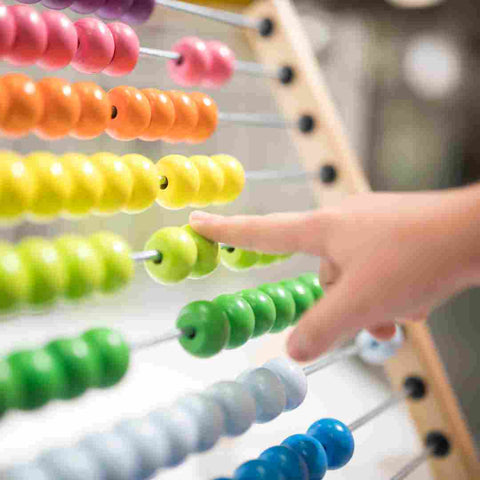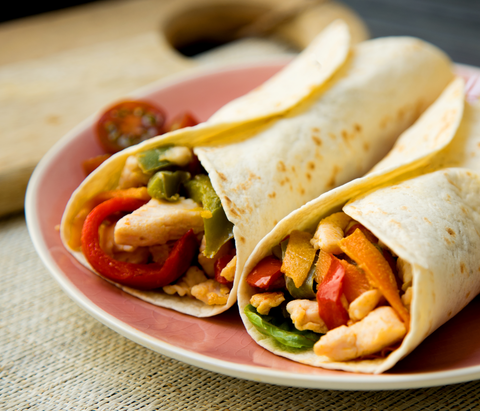Welcome to the third guide in our Beginning Keto series! We have decided to share some great advice on counting macros so that you can eat with confidence and enjoy every mouthful without fear of breaking your keto diet plan.
Haven’t read the other parts of our Beginning Keto series? Head on over to read about some Easy Keto Meal ideas and Low-Carb Food Swaps!
Keto Macronutrient Ratios
Macros are a way of understanding where the calories in your food come from. You can have protein, carbohydrate and fat macros and need to eat a specific percentage of each to achieve ketosis. The traditional keto diet is broken down into the following macro make-up:
- 70% fat
- 25% protein
- 5% carbs
Whilst there are many schools of thought surrounding carb intake and macronutrient ratios, we advise following this specific breakdown as the daily intake of 5% carbs (or 25g net carbs) and high fats will help your body reach ketosis and best trick your body into creating an environment that burns more fat for energy - in other words, this macro ratio will help speed up the process that leads to weight loss!
Working Out Your Macro Needs
With our four easy steps, you will be able to determine your macros needs ready to get started on the keto plan:
Calories
The first, and most important, step when you start a keto diet is to work out what your calorie needs are. This is dependent on whether you are looking to lose, gain or maintain your weight - the most common reason people choose the keto diet is to lose weight and so you will need to create a calorie deficit to do this.
There are many great online resources available to help you work out your calorie requirements and it is important to regularly check this because as you lose weight, your calorie needs will reduce too.
Carbs
To be successful on keto, you will need to reduce your carbohydrate intake significantly and being aware of how many net carbs you can eat will allow you to plan delicious meals easily.
Confused about what net carbs are? Read this blog post before reading on!
Most keto’ers start with a carb goal of around 20g - 25g but this can be increased to 45g in the first few weeks, especially if you have been living a carb-heavy lifestyle before starting on keto.
As you progress through the first few weeks you can then use the following guide to help you work out how many carbs to eat every day:
- Total calories under 2000 = 20g or less of carbs
- Total calories between 2000 - 2500 = 25g - 35g of carbs
- Total calories between 2500 - 3000 = 30g - 35g of carbs
- Total calories over 3000 = 35g - 50g of carbs
Protein
Your total protein intake per day is dependent on your activity level and it plays an important part of your daily intake because it supports your body to work effectively and efficiently.
There are some people that argue for a low protein intake on keto but in reality, many people enjoy a higher protein intake and still stay in ketosis. If you need some help working out your protein needs then you first need to recognise how active you are. Sedentary people do very little to no exercise, moderately active people exercise twice a week or more, highly active people exercise for three or more days a week
When you have the information you need you can follow this quick calculator to work out your protein needs:
If you want to convert your protein grams into calories you just need to times it by four as each unit of protein is worth four calories.
Fat
The final part of your macro calculations require you to consider your fat intake. Every gram of fat that you consume is worth around nine calories and so all you need to do is work out how many calories you are consuming from carbs and proteins and then take that from your calorie goal. The number you are left with needs to be divided by nine to give you the amount of fat you can eat in grams each day.
Because fat is the largest portion of your daily intake, you should have little problem sticking to the result that you get.
Counting Your Macros Every Day
Many people get in touch to ask us whether they should actively track their macro intake each day or not. While many people on keto focus on reducing carbs and avoiding counting as much as possible, we would always recommend that you start the keto plan by measuring and tracking.
The reason we recommend this is because it is hard to eyeball a calorie count and getting this wrong by even 10g per meal 3 times a day will instantly kick you out of your hard earned ketosis. Not counting your macros means preventing yourself from shedding the weight you’ve been working hard to get rid of!
You can choose to download a macro meal planning app or just stick to pen and paper, but either way you should always be honest about what you have eaten so that you can enjoy the best possible results.
Buying Products That Support a Keto Lifestyle
If you are struggling to find products that work for your keto dieting needs then do not despair! Here at NGB we work hard to create a number of keto-friendly and highly delicious products so that you can enjoy what you eat without spoiling your diet - check out our store today!
Struggle with figuring out net carbs from product labels? Read our blog post to learn more and help you become a net carb calculating pro!
Next Time
The next time you hear from us we will be bringing you the final installment of our Beginning Keto series and our focus will be on all things ketosis - what it means and when and how you can measure ketosis. Until the next time!




Comments (0)
There are no comments for this article. Be the first one to leave a message!